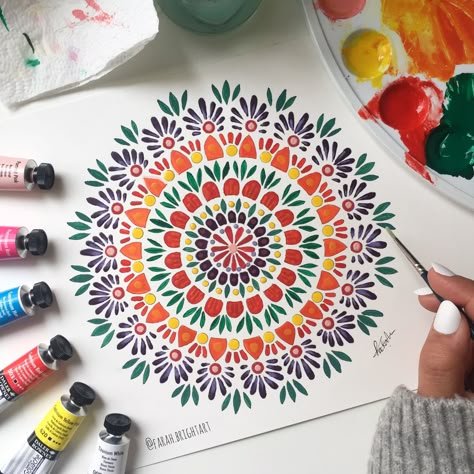Uncategorized
The Art of Mandalas: Symbolism & Spiritual Meaning
Mandalas have been cherished across cultures for centuries, symbolizing harmony, balance, and spiritual enlightenment. These intricate, circular designs hold deep significance, making them more than just visually appealing patterns. Whether used for meditation, decoration, or personal expression, mandalas have a unique ability to calm the mind and inspire creativity.
In this blog, let’s explore the origins of mandalas, their symbolic meanings, and how they can be incorporated into your life for inner peace and mindfulness.
1. The History of Mandalas Across Cultures
Mandalas date back thousands of years and can be found in various cultures and traditions around the world.
- Buddhism & Hinduism: In ancient Buddhist and Hindu traditions, mandalas are used as sacred spiritual symbols. They represent the universe, the connection between the inner and outer worlds, and the path to enlightenment. Tibetan monks often create intricate sand mandalas as a meditative practice, only to destroy them afterward—symbolizing the impermanence of life.
- Native American Culture: Indigenous tribes have used mandala-like patterns in their dreamcatchers and sacred symbols to ward off negative energy and maintain spiritual balance.
- Christianity: Circular stained glass windows in churches often resemble mandalas, symbolizing divinity and wholeness.
- Modern Use: Today, mandalas are widely used in art therapy, mindfulness practices, and home decor due to their calming effect on the mind.
2. The Symbolism of Shapes and Colors in Mandalas
Every element of a mandala carries deep symbolism—from the geometric patterns to the colors used.
🔺 Shapes & Their Meanings
- Circles: Represent wholeness, unity, and eternity.
- Squares: Symbolize stability and grounding.
- Triangles: When pointing upwards, they signify growth and aspiration, while downwards indicate spirituality and intuition.
- Lotus Petals: Often found in mandalas, they represent purity, enlightenment, and transformation.
🎨 Colors & Their Energy
Each color in a mandala has its own significance:
- Blue: Peace, tranquility, and healing.
- Red: Strength, passion, and vitality.
- Yellow: Happiness, wisdom, and positivity.
- Green: Growth, harmony, and nature.
- Purple: Spirituality, wisdom, and intuition.
Choosing colors for a mandala can be intuitive and personal, reflecting emotions, energy, and intentions.
3. How Mandalas Promote Relaxation and Meditation
Mandalas are often used as tools for meditation and mindfulness. Their repetitive patterns help the mind focus, reduce stress, and bring a sense of calmness.
- Mandala Meditation: By gazing at or coloring a mandala, you can enter a state of deep relaxation, similar to meditation. It helps in letting go of worries and achieving inner peace.
- Art Therapy: Many therapists use mandala creation as a form of stress relief and self-expression, helping people connect with their emotions.
- Mindful Creation: Drawing or coloring mandalas allows you to immerse yourself in the moment, fostering creativity and a sense of inner balance.
Research has shown that mandala-based activities can lower anxiety, enhance concentration, and improve overall well-being.


